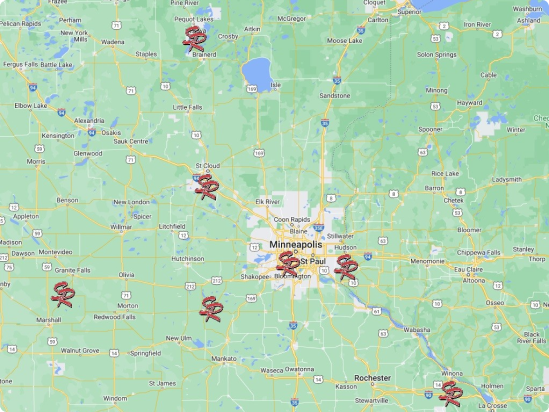Winter weather can be tough on your home’s siding. If you’re not careful, the cold temperatures combined with ice and snow can cause severe damage to your home. When moisture is allowed to penetrate your siding, it can cause irreparable damage, ultimately leading to the need for siding replacement.
How can you prepare your home’s siding for winter weather? Follow these tips this fall to avoid unnecessary damage.
- Inspect Your Siding
Closely inspect your siding for any cracks, holes, or other noticeable damage. If you find any damage, it’s important to repair it as soon as possible. Small cracks and holes can quickly become larger if they’re not taken care of.
If you have vinyl siding, you may also want to check the seams and joints to ensure they’re still tight. Over time, the seals can break down and allow moisture to get in. This can cause the vinyl siding to warp and become discolored.
Lastly, take a look at the caulking around your windows and doors. If the caulking is cracked or peeling, it needs to be replaced. This will help keep drafts from coming into your home and prevent moisture from getting in and causing damage.
Remember, it’s not too late in the year for siding replacement. You can get new siding at any time of the year, which can save you a lot of headaches as the winter weather sets in.
- Clean Your Siding
The next step is to clean your siding to remove any dirt, grime, or other build-up that has occurred over the year. A pressure washer can be a great tool for this job. Use the correct settings and hold the nozzle at least 12 inches from the siding.
If you have vinyl siding, you may also want to use a mild soap and water solution to clean it. Rinse it well afterward so that no soap residue is left behind. After you’ve cleaned your siding, look at it again and see if any areas need to be repaired or replaced. If you find any damage, take care of it before the cold weather sets in.
- Protect Your Siding
Once your siding is clean and in good condition, you’ll want to protect it from the harsh winter weather. If you have any exposed wood on your siding, you may also want to apply a coat of paint or stain. This will help protect the wood from moisture and rot.
Another way to protect your siding is to ensure your gutters and downspouts are clear and allow water to drain away from your home. Clogged gutters can cause water to back up against your siding, which can lead to damage. If you need new gutters, now is the time to have them replaced. This will help ensure that melting snow and rainwater are directed away from your home.
- Check Your Front door
The front door also plays an important role in protecting your siding. If the paint or varnish on your front door is flaking or peeling, it can create a pathway for moisture to seep into your home and damage your siding.
Also, ensure it is properly sealed and fitted, as a drafty or damaged front door can let in cold air and moisture. You may also want to install weatherstripping around your door frame to improve insulation.
- Repair or Replace Damaged Siding
Lastly, if you find any damage to your siding, it’s important to repair or replace it as soon as possible. Small cracks and holes can quickly become larger if they’re not taken care of. Once the cold weather sets in, these repairs can become much more difficult.
If you have vinyl siding, you may be able to repair small areas yourself. However, hiring a professional for larger areas or more serious damage is best. The same is true for wood siding. Unless you’re experienced in siding replacement or repair, it’s best to leave this job to the professionals.


